History Of Comics
10 “Borrowed” Marvel Super-Heroes by Stan Lee
by Joshua H. Stulman
Stan Lee is one of the best known comic creators of all time. He’s certainly earned it too. Stan Lee has been writing comics since the early 1940’s. From the 1950’s-1960’s, he was one of the only full time writers for Marvel as well as editor of Marvel’s entire comic book line. This meant he had to come up with new ideas fast while handling both the creative and business end of making comic books.
How did he do it? Well I’m sure coffee had alot to do with it, but also his keen eye for reviving old concepts. Whether from fiction literature or pre-existing comic characters by then defunct comic companies, Stan Lee was a master at reformatting and tweaking old concepts with a modern twist! It also didn’t hurt to have one of the greatest artists, Jack Kirby, at his side for most of his groundbreaking Silver Age creations.
Here’s Brooklyn Comic Shop’s Top 10 list of “borrowed” Stan Lee Super-Heroes:
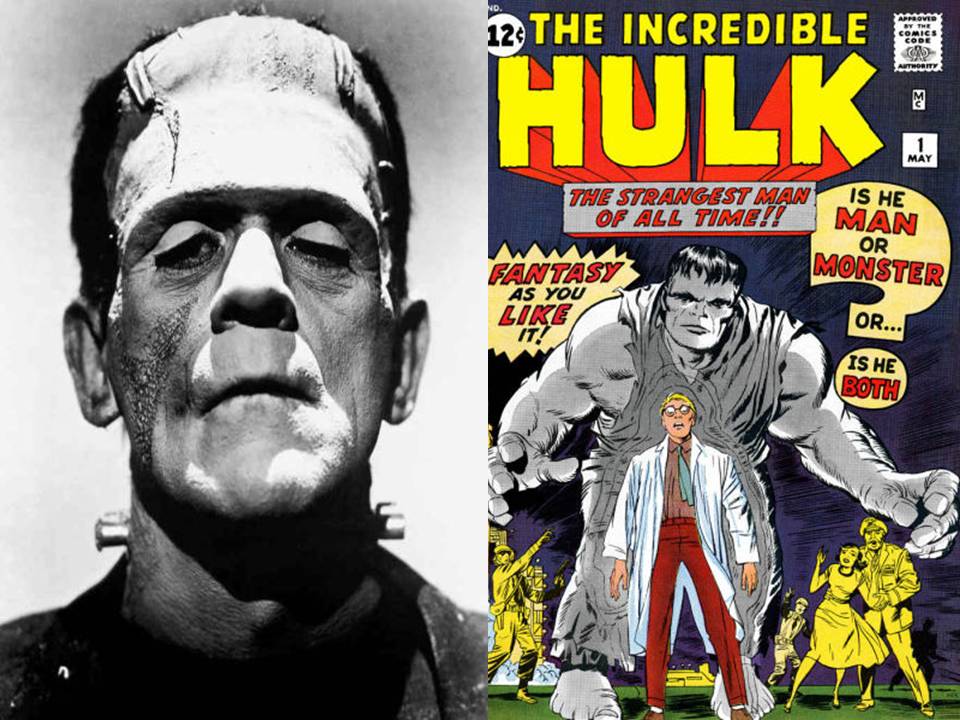
10. Hulk- Frankenstein/Werewolf
Like many people growing up in the 1930’s, Stan Lee was an avid movie goer. He absorbed many influences from popular science fiction movies of the time including Boris Karlof’s Frankenstein (1931) and Werewolf horror films. “The Hulk” name was borrowed from his previous science fiction story Journey Into Mystery # 62 (1961), which literally featured a Frankenstein scenario.
For Hulk’s debut in the Incredible Hulk #1 (1962), the Frankenstein Monster and the Dr. Frankenstein character were combined as Dr. Bruce Banner/Hulk. The Hulk persona would emerge when the moon came out at night (ala the Werewolf). Hulk was originally colored grey like the Black and White Frankenstein Films, but was quickly changed to green to reflect both the Frankenstein movie posters and Aurora model kits that were popular at the time.
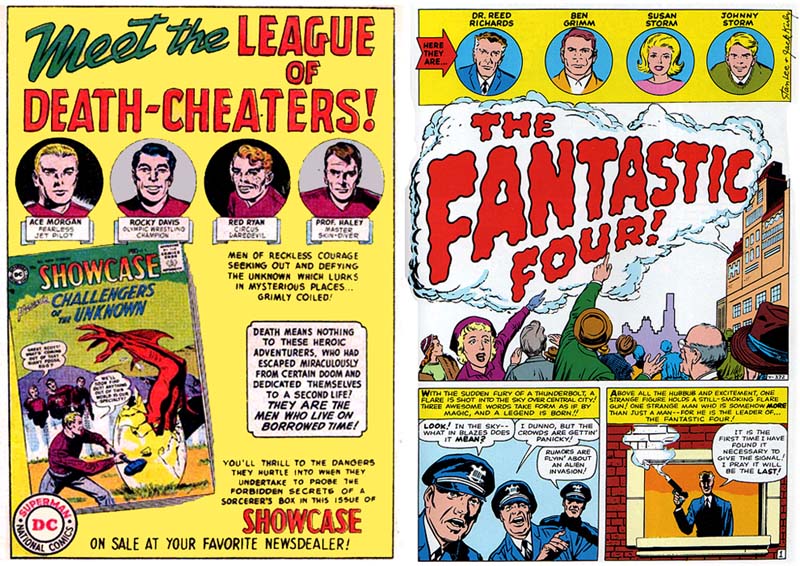
9. Fantastic Four- Challengers of the Unknown
Jack Kirby is regarded as one of the greatest artists and creators in comics. He was already a seasoned veteran by the time he began working with the younger Stan Lee. Stan Lee recognized Kirby’s strengths and used it to reinvigorate many of Kirby’s older concepts, especially from his days at DC Comics.
Challengers of the Unknown was one of Kirby’s creations for DC that debuted in Showcase # 6 (1957). It’s also one of the many DC Comic titles that Stan Lee would emulate. And Why not? After all, Marvel was always trying to out do DC’s #1 reputation in the industry. Stan Lee would often look to the competition for new ideas. Challengers Of the Unknown is basically a team of four people dressed in purple costumes that go on Sci-Fi adventures-like something out of an Isaac Asimov novel. In fact the group was comprised of a scientist, a hot headed flying ace, and a guy nick-named “Rocky”. As the Fantastic Four, Lee mimicked these as Mr. Fantastic, The Human Torch (a new twist on Marvel’s first Super hero), and the Thing.
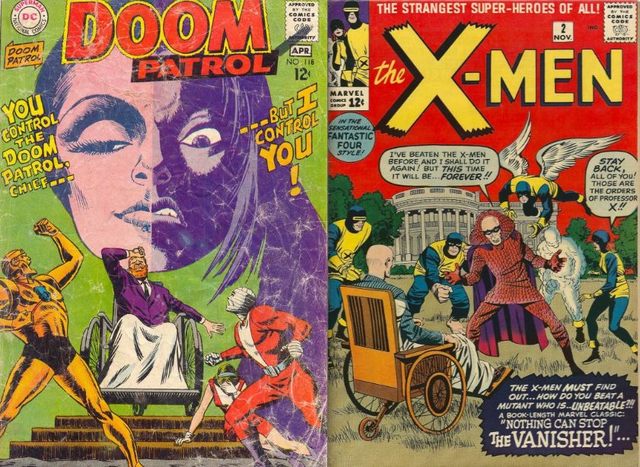
8. X-Men- Doom Patrol
It’s hard to say whether Lee was actually swiping concepts from DC on this one because he had been working out similar concepts in earlier prototype stories. Doom Patrol debuted in My Greatest Adventure # 80 (June, 1963) as a group of super powered teens led by the wheel chair bound, Dr. Niles Caulder. Sound familiar? X-Men #1 would debut several months later in September that year, however prototype concepts for Magneto can be found in Strange Tales # 84 (1961) and Incredible Hulk # 6 (1962). Professor X prototypes can be found in Amazing Fantasy # 14 (1962). You decide!
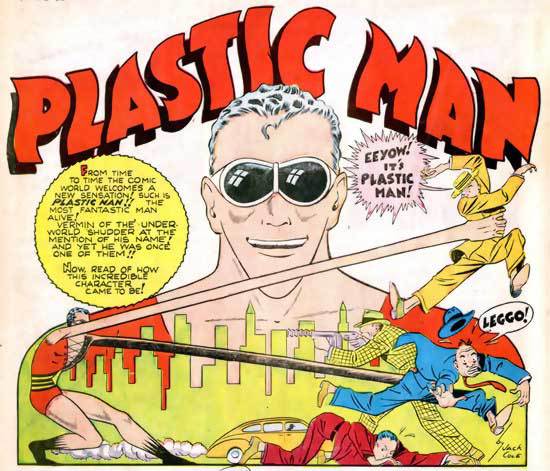
7. Mr. Fantastic- Plastic Man
Creating a stretchy super-hero is weird and kinda far out there, unless of course a popular character already existed 20 years earlier. Stan Lee was a master at tapping into the nostalgic memory of older characters no longer published. Plastic Man was created by Jack Cole in Police Comics # 1 (1941) when Stan Lee was still a teen. Plastic Man was a reformed gangster who fought crime in a more humorous tone. His adventures were published by Quality Comics until 1956 when the company went out of business. Because Quality Comics still retained the rights to the Plastic Man name, Stan Lee just named his stretchy guy Mr, Fantastic. Plastic Man would later be bought by DC Comics and re-emerge in House of Mystery # 160 (1966).
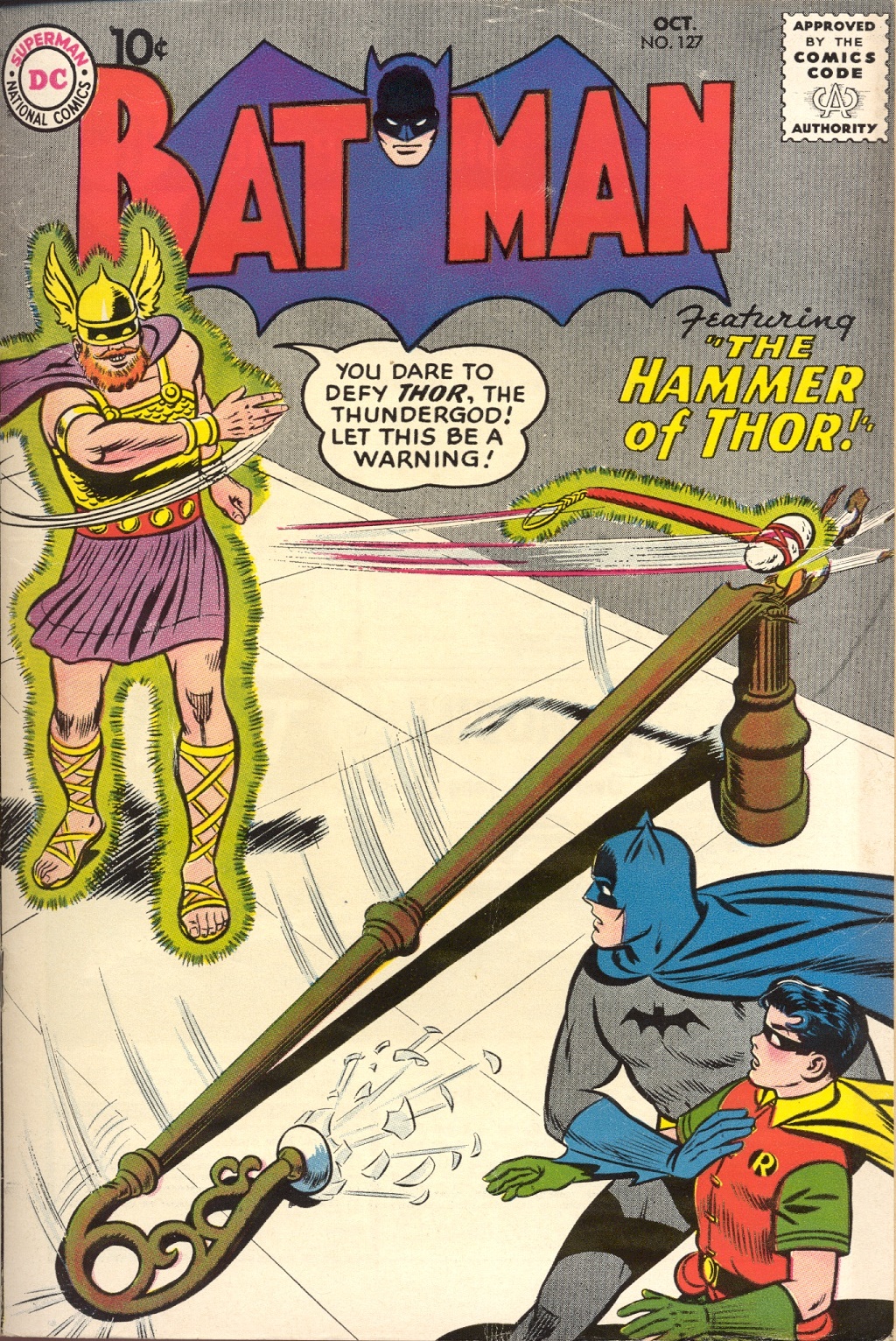
6. Thor- Thor
While you can’t really claim a mythical character as your own, Marvel’s Thor which appeared in Journey Into Mystery #83 (1962) was not his first go around in comics. Sure enough, Jack Kirby had done a Thor story for DC in Tales of the Unexpected # 6 (1957) in which a cowboy discovers Thor’s hammer in the desert. When Thor appears to reclaim it, his design has the familiar large circles on his tunic as in Kirby’s later Marvel designs. A different DC Thor also appears in Batman # 127 (1959). Here the character wears his winged helmet and cape as well as the ability to have his hammer return to him when thrown.
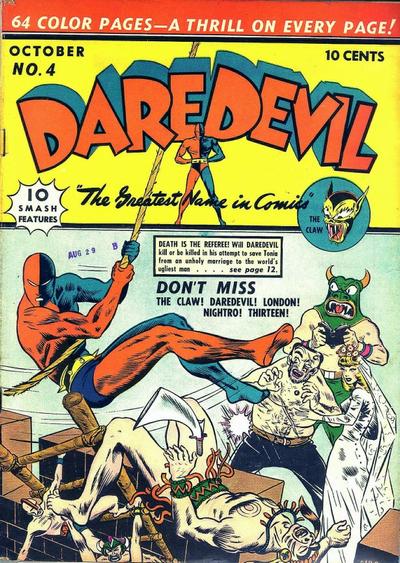
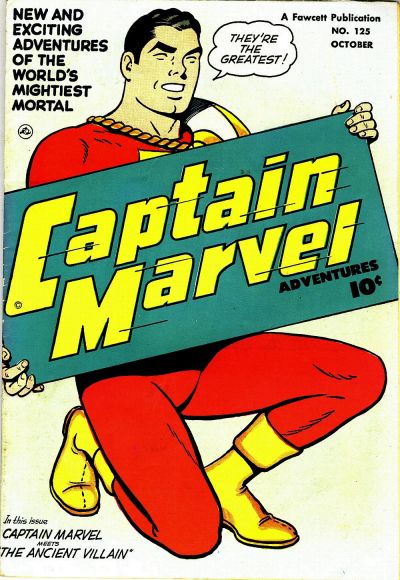
5. Borrowed Names- Daredevil, Captain Marvel
What’s in a name? Well everything if you’re Stan Lee. As mentioned above, Stan Lee understood the nostalgia of his comic audience and often drew on previously published characters for inspiration. If a charcter’s name was available for use, Stan Lee would tap the unused name recognition and copyright it for Marvel. Even though the characters may be totally different than their predecessor, the name recognition was most important for sales. His most famous name swipes are Daredevil from Lev Gleason Publications Silver Streak Comics # 6 (1940) and Captain Marvel from Fawcett Comics Whiz Comics # 2 (1940).
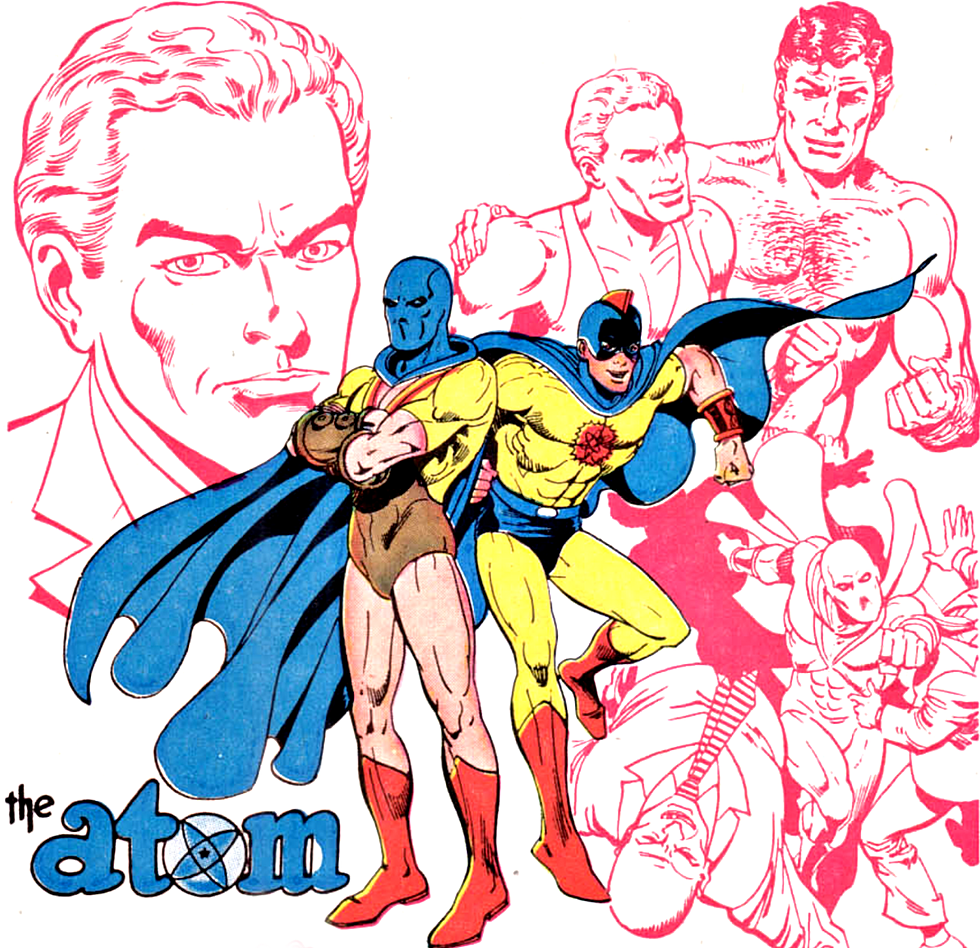
4. Ant-man – the Atom
Shrinking characters have been in comics since the beginning like Doll Man created by Will Eisner for Quality Comics in Feature Comics # 27 (1939). The character was published until 1953. After Quality Comics went out of business, Julius Schwartz at DC began to revive the Super-Hero genre. He began with DC’s original characters and concept like the Flash (1956), Green Lantern (1959), and the Justice League (1960). The Atom (All American # 19, 1940) was a Golden Age DC character and original member of the Justice Society. Schwartz revived the concept with a science fiction twist as the new Atom (Physicist Ray Palmer) in Showcase # 34 (1961). The character received his self titled comic in 1962. Stan Lee took note and sure enough he created a shrinking scientist too, Professor Hank Pym, the Ant-Man in Tales to Astonish # 27 (1962).
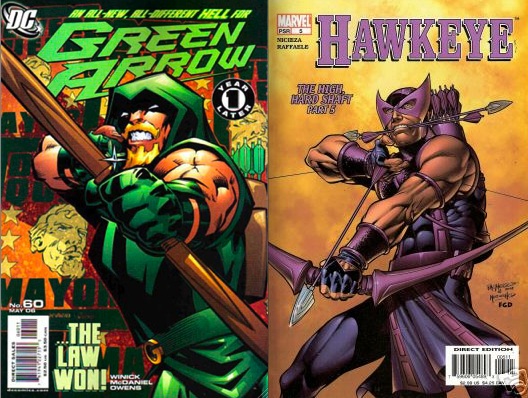
3. Hawkeye- Green Arrow
The credit for heroes that shoot bow and arrows undoubtedly go to the Robin Hood films by Errol Flynn. Amongst many comic imitators was the Green Arrow from More Fun Comics #73 (1941). The character continued publication by DC sporadically into the late 1950’s where Jack Kirby updated and re-worked the characters origin starting in Adventure Comics # 250 (1958). As Stan Lee was reinvigorating Marvel with new super-heroes in the early 1960’s, he created his own archer, Hawkeye, in Tales of Suspense # 57 (1964).
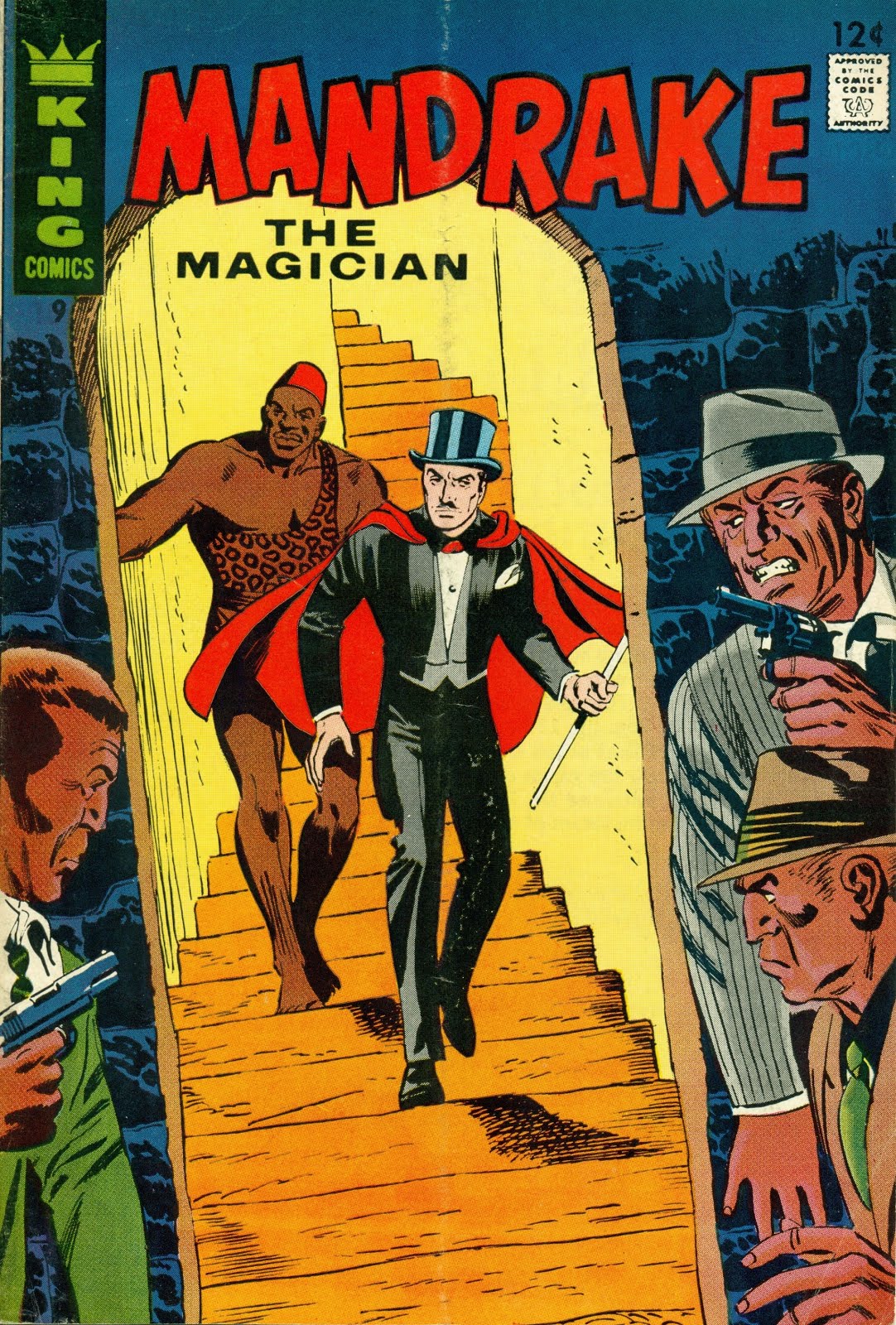
2. Dr. Strange – Mandrake, the Magician
One of the early comic strip heroes with special powers, Mandrake, the Magician used magic spells and hypnosis to fight crime in New York City. He was created by author Lee Falk as a syndicated newspaper strip in 1934, whose adventures continued until 2013 in comic strip format. Mandrake was featured in radio and film in the 1940’s. He lived in a secluded mansion called Xanadu outside the city and wore a red cape and thin mustache. Stan Lee must have been paying attention to something when he created Dr. Strange, a similarly mustached character with dark hair and red cape in Strange Tales # 110 (1963).
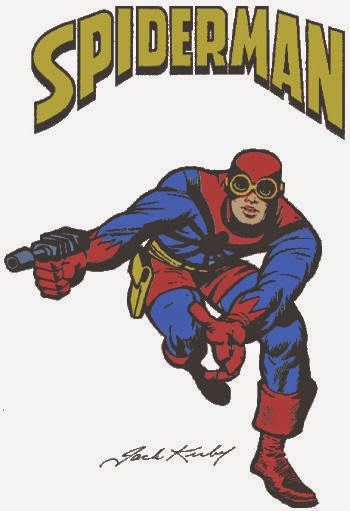
1. Spider-Man – Captain Marvel, The Fly
When Jack Kirby alleged that he created Spider-Man in 1990 interview from the Comics Journal, he might not have been far off. After all he did draw the cover to Spider-Man’s first appearance in Amazing Fantasy # 15 (1962) and as well as the layouts and some artwork for the cover of Amazing Spider-Man # 1 (1963).
Spider-Man’s mixed origins go far back even further in comic history all the way to 1941 with Captain Marvel, the first boy turned adult superhero. It’s not a coincidence that Peter Parker is a teenager, Captain Marvel was so popular it outsold Superman in the 1940’s because his alter ego, Billy Batson, was the same age as its readers. But what of the Spider influences?
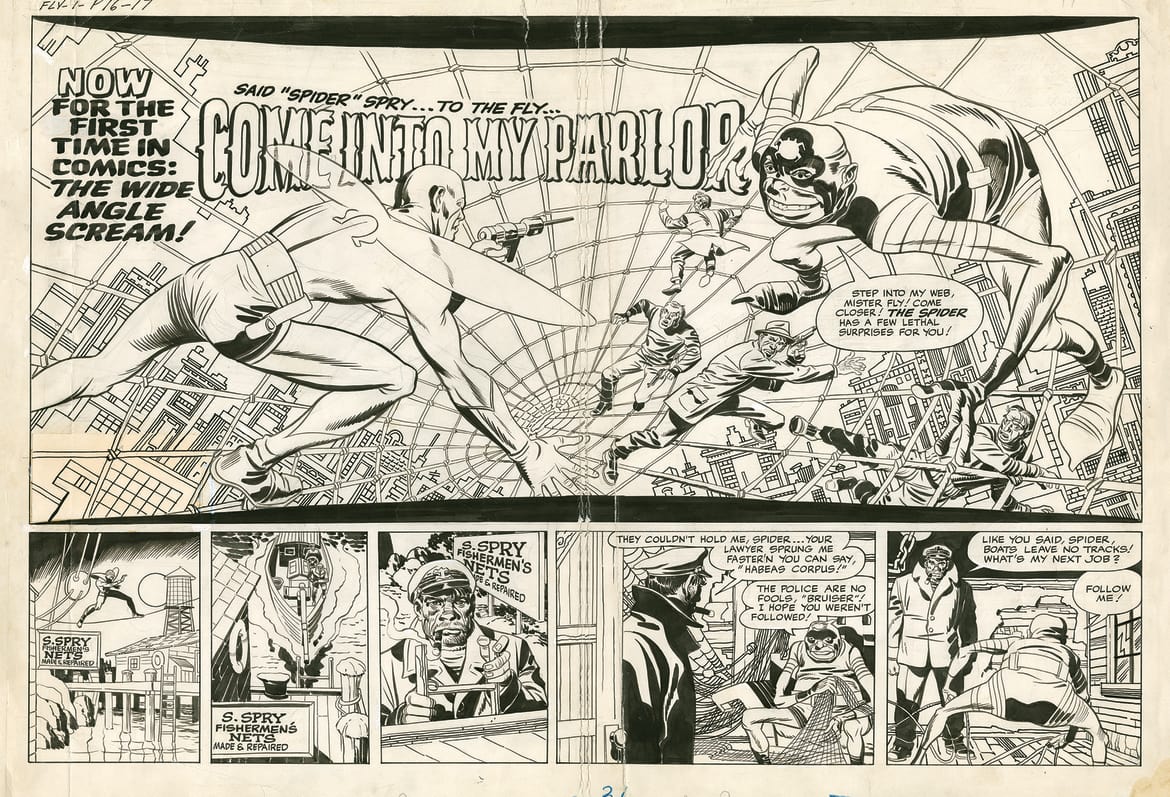
During the 1950’s, Jack Kirby was bouncing around doing work for a number of comic companies including DC and Archie Comics. At the time, Archie was interested in producing Super-Hero books to compete with Julius Schwartz’s Super-Hero revival at DC. Together Joe Simon and Jack Kirby developed an insect themed character called the Fly which debuted in The Secret Life of Private Strong # 1 (1959). In reality, the character was a reworking of 1954 concept, The Silver Spider, by Joe Simon and longtime Captain Marvel artist, C.C. Beck. The Fly was a boy who found a magical ring that allowed him to switch bodies as an adult from another dimension. The Fly could walk up walls, had super-stregnth and agility, and had the ability to sense everything around him. In the Fly’s self titled first issue, he combats the villainous Spider-Spry, who among other things uses tech that involves webbing. After the first four issues, Simon and Kirby left the feature.
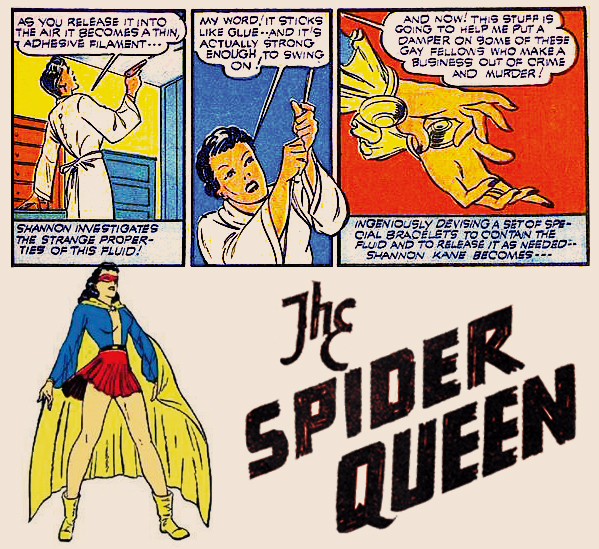
If that’s not enough, turns out there was a Spider-Woman character called Spider-Queen who briefly appeared in The Eagle # 2 (1941) published by Fox Publications. Appearing only for 3 stories, the character had a unique invention- Spider Web Shooters in the form of bracelets on her wrists. The web shoots produced a sticky glue substance that could support her weight so that she could swing through the night.
Steve Ditko recounted that originally Jack Kirby was to draw the Spider-Man story in Amazing Fantasy # 15 with Ditko inking. Kirby submitted 5 pages of artwork and costume design for Spider-Man. The designs featured a Captain America esque costume with web-shooting gun. The character was too close to his previous Fly super-hero for Archie. The artwork was rejected by Stan Lee and Ditko was brought on to rework everything from costuming to story elements. But how did Ditko come up with the inspiration for a new and different design for Spider-Man’s unique web themed costume?
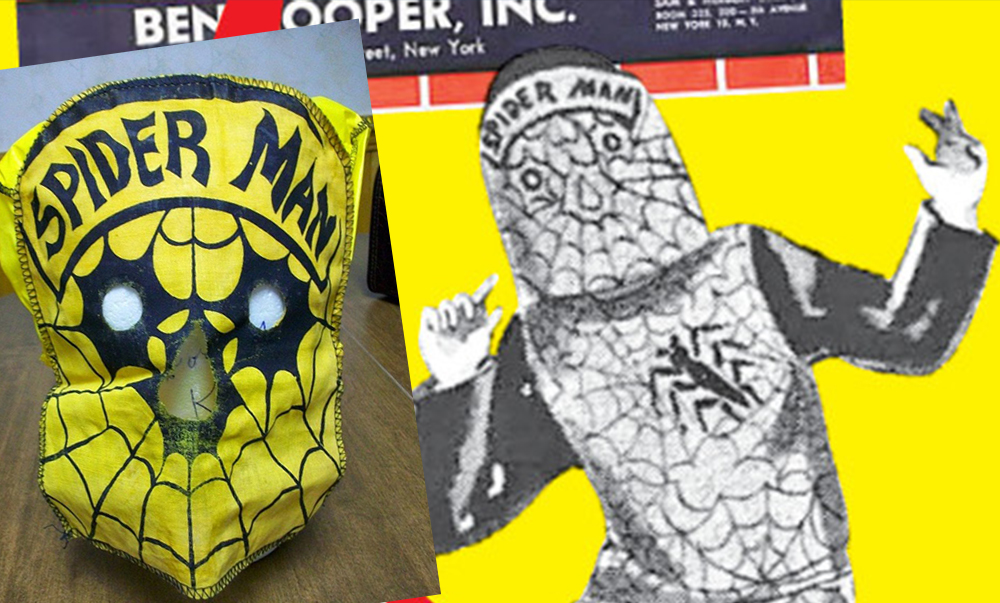
Check out this 1954 ad by Ben Cooper, Inc for a children’s “Spider-Man” costume!!
There are many more examples of DC and Marvel “borrowing” ideas. What’s Your Favorite? Leave a reply below.
Joshua H. Stulman
Owner, BrooklynComicShop.com

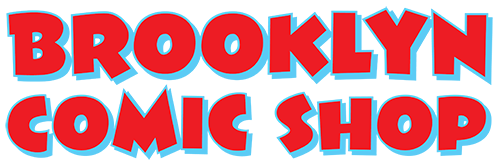
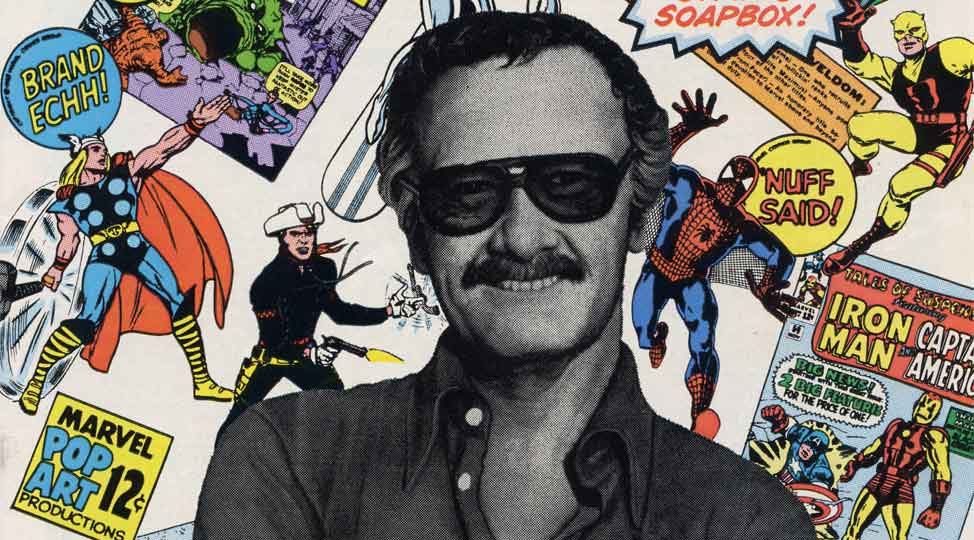
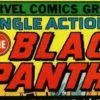
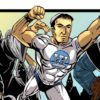






Leave a reply